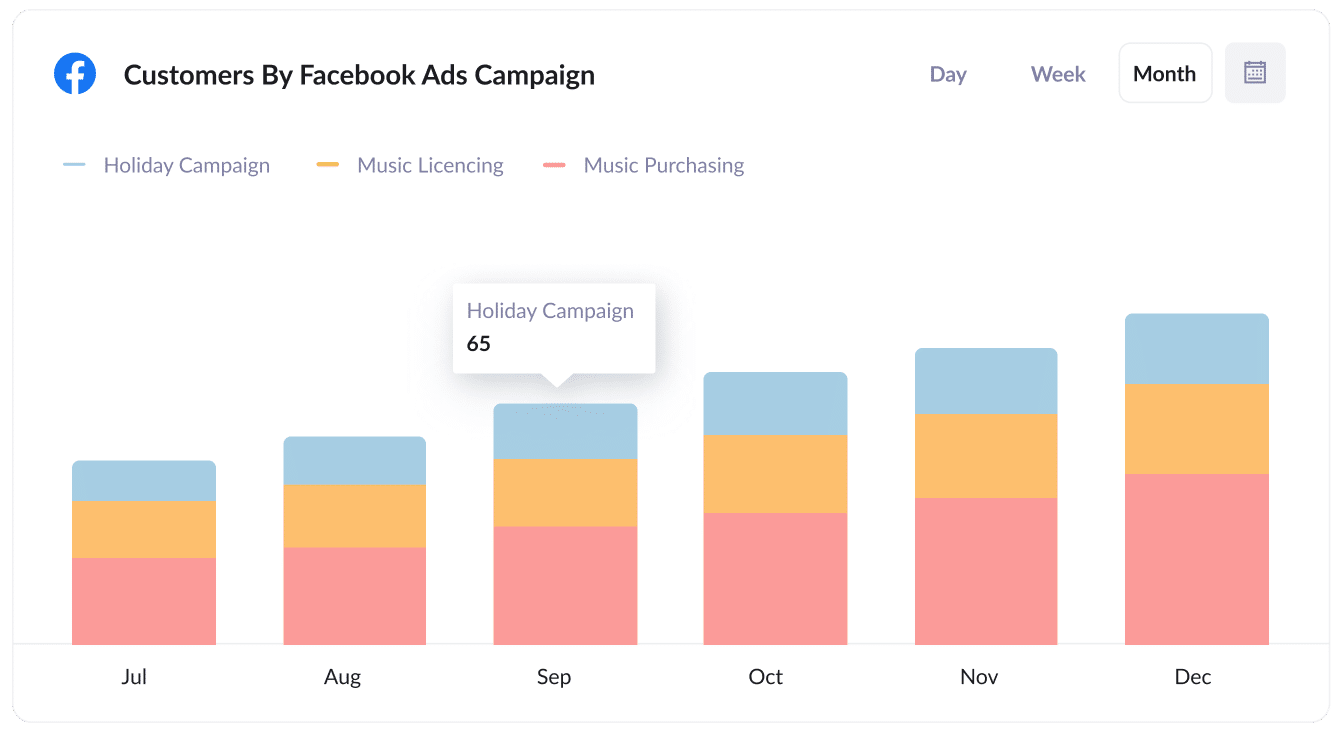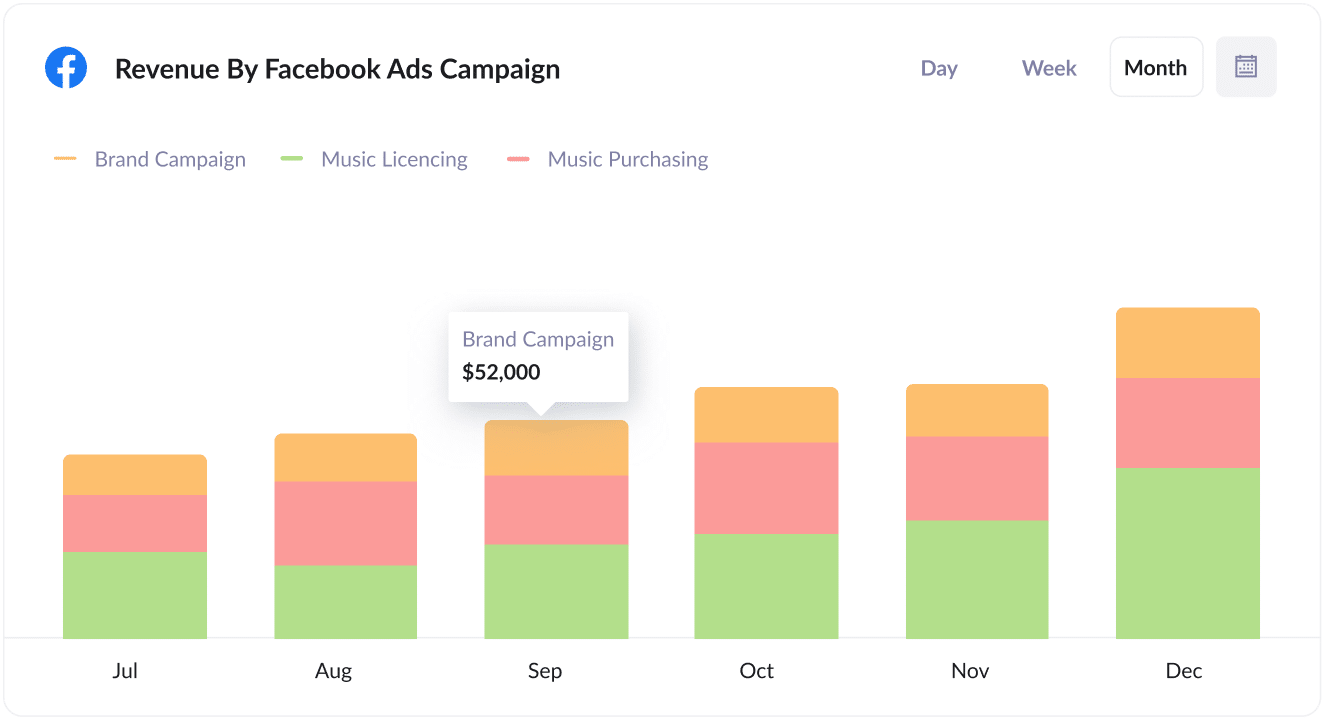How to track Facebook Ads in Attio
Learn how to track which of your Facebook Ad campaigns are driving the most leads & customers

Want to know how many leads and customers you’re getting from your Facebook Ads?
Tools like Google ANalytics are great for telling you how many website visitors you got, but they fall short when it comes to showing how many leads & customers your Facebook Ads generated.
Luckily, there’s an easy solution.
Read on to learn how you can use a tool called Attributer to track the performance of your Facebook Ads in Attio.
What is Attributer?
Attributer is a small snippet of code that you put onto your website to understand where your leads are coming from.
When a visitor lands on your website, Attributer looks at some technical data about how the visitor got there (similar things that tools like Google Analytics look at) and uses the information to determine where the visitor came from.
Attributer then categorizes the visitor into a variety of different channels (e.g. Paid Social, Paid Search, etc) and then saves the data to a cookie in the user's browser.
Then when the visitor completes a form on your website, Attributer writes the marketing attribution information into hidden fields in your forms and the data can then be sent to the backend tools you have connected to your forms, such as Attio CRM.
You can then use this data to run reports that show you information like:
- The number of leads you got from Facebook Ads
- The number of opportunities generated through Facebook Ads
- The campaigns that are generating the most opportunities
- The number of Closed Won Deals/Customers generated from Facebook Ads
- The close rate of Opportunities from Facebook Ads vs other sources
- Revenue generated from Facebook Ads
- Your marketing ROI (Ad Spend vs Revenue Generated)
4 simple steps to track your Facebook Ads in Attio
Attributer makes it easy to get started tracking your Facebook Ads in Attio. Here’s how:
1. Install Attributer on your website

After you sign up for a free 14-day trial of Attributer, you’ll receive a piece of code to add to your website. Instructions on how to install it can be found here, but you can essentially either add it directly to your site (typically through the Settings section) or you can add it using tools like Google Tag Manager.
When you’ve installed the Attributer code, the next step is to add a number of hidden fields to the lead capture forms on your site. Those hidden fields are:
- Channel
- Channel Drilldown 1
- Channel Drilldown 2
- Channel Drilldown 3
- Channel Drilldown 4
The majority of form-building tools (like Gravity Forms, Typeform, Jotform, etc) make it simple to add hidden fields.
You should be able to either drag and drop a ‘Hidden’ field type into the form, or you can make a standard form field hidden via the settings. Instructions for how to do it for the various form builder tools can be found here.
2. Add UTM parameters to your Facebook Ads

Once Attributer is up and running on your website, the next step is to add UTM parameters behind your Facebook Ads campaigns.
If you’re not sure what UTM parameters are, they are basically extra pieces of text that you add to the end of the URL you are sending visitors to from your campaigns.
So if the page you are sending someone to is attributer.io/integrations/attio then your final URL (with UTM parameters) might look a bit like this:
attributer.io/integrations/attio?utm_medium=paidsocial&utm_source=facebook&utm_campaign=brand-campaign
And while you can structure UTM parameters however you like, the general best practice for Facebook Ads is something like:
- UTM Medium = Paid social
- UTM Source = Facebook
- UTM Campaign = The name of your campaign
- UTM Term = The name of the ad set the ad belongs to
- UTM Content = The specific ad
Tagging your URLs with UTM parameters is easy and there are free tools available on the web which can help you build them.
3. Attributer writes the Facebook Ads data into the hidden fields on your form

When a visitor lands on your site from your Facebook Ads, Attributer captures the UTM parameters and stores them in a cookie in the visitor’s browser (so they aren’t forgotten when the visitor browses around your website).
When that visitor completes your form (like a ‘Contact Us’ or ‘Request A Quote’ form), Attributer writes the Facebook Ads data into the hidden fields on the form and the data is captured alongside the lead’s name, email, etc when the form is submitted.
To explain further, let’s imagine you’re a marketer at Attio and you’re running ads to promote the Attio CRM. If a visitor clicks on one of your Facebook Ads, browses your website and then completes a form to get a demo, Attributer would write the following information into the hidden fields (depending on the UTM parameters used behind your ad):
- Channel = Paid Social
- Channel Drilldown 1 = Facebook
- Channel Drilldown 2 = Brand Campaign
- Channel Drilldown 3 = Europe Ad Group
- Channel Drilldown 4 = Pink Ad
4. Facebook Ads data is sent into Attio

Finally, all of the Facebook Ads data (originating from the UTM parameters) is passed into Attio along with the name, email, phone, etc of the lead.
With that data flowing into Attio, you can report on it using the native reporting tools in Attio, or if you have one, you can use a 3rd-party analytics tool like Tableau or Looker to run more advanced reports.
Why use Attributer?
Sure, there are other options for sending Facebook Ads data into Attio, so why use Attributer?
There are several main benefits:
- Captures other marketing attribution information - On top of capturing the source of leads that come from your Facebook Ads, Attributer also captures information on the leads who come through other channels like Organic Search, Organic Social, Referral, or Direct. This means you can see where ALL your leads and customers are coming from, not just those from your Facebook Ads.
- Remembers the data - Attributer stores the UTM parameters in a cookie in the user’s browser - most other tools don’t do this. This means that it doesn’t matter which page the user completes a form on, the UTM parameters are always passed through and you’ll have more accurate data on the number of leads and customers you’re receiving from your Facebook Ads.
- Cleans the data - Attributer was built using technology which expects inconsistencies in UTM usage. For example if you’re using utm_source=facebook in some campaigns and utm_source=facebook.com in others. Attributer knows to assign these leads to the correct channel (Paid Social in this case) regardless of these UTM inconsistencies, ensuring you have more accurate data.
- Captures landing page data - Attributer also captures the landing page URL (E.g. https://attributer.io/blog/capture-utm-parameters-attio) and landing page group, (e.g. /blog). This allows you to see how your content (I.e. your blog) is performing.
3 example reports you can run when you track Facebook Ads in Attio
If you follow the above 4 steps and use Attributer to capture Facebook Ads data in Attio, then you can run reports similar to these:
1. Leads by channel

With Attributer capturing the source of all your leads, not just those from your Facebook Ads, you can run reports like the one above that shows the number of leads broken down by channel.
This can help you see how your Facebook Ads are performing relative to your other channels, and can help you make more strategic decisions about where to spend your marketing budget and time (it may be that Google Ads performs better and the budget should go there).
2. Customers by campaign

This report shows the number of new customers generated each month from your Facebook Ads, broken down by the campaign they came via.
It can be useful to compare this chart to the leads one and see if there are campaigns that are delivering leads that never actually convert into customers, as this can be a sign that it’s not worth continuing to invest in those campaigns.
3. Revenue by campaign

This report shows revenue generated each month broken down by the campaign the customer originated from.
This report is useful for measuring the overall ROI of your Facebook Ads. For example, in the above graph we can see that $65,000 in new revenue was generated from Facebook Ads in August. If you spent less than this on Facebook Ads and associated agencies, creative, etc, then it’s a positive ROI and worth pursuing.
You can then also break this down by the individual campaign and see which ones are worth investing more in and which ones should be halted.
Wrap up
If you want to track the success of your Facebook Ads in Attio, then Attributer is a great solution.
Attributer captures the UTM parameters you use behind your Facebook Ad campaigns and passes them to Attio, which enables you to run reports that show which campaigns and ad sets each of your leads and customers are coming from.
On top of that, Attributer also gives you data on leads that come from other channels, so you can track the source of ALL your leads (not just the ones from Facebook Ads) and ultimately know where you need to invest to grow your business.
Best of all, it's free to get started and usually takes less than 15 minutes to set up, so start your free trial today!
Get Started For Free
Start your 14-day free trial of Attributer today!

About the Author
Aaron Beashel is the founder of Attributer and has over 15 years of experience in marketing & analytics. He is a recognized expert in the subject and has written articles for leading websites such as Hubspot, Zapier, Search Engine Journal, Buffer, Unbounce & more. Learn more about Aaron here.
